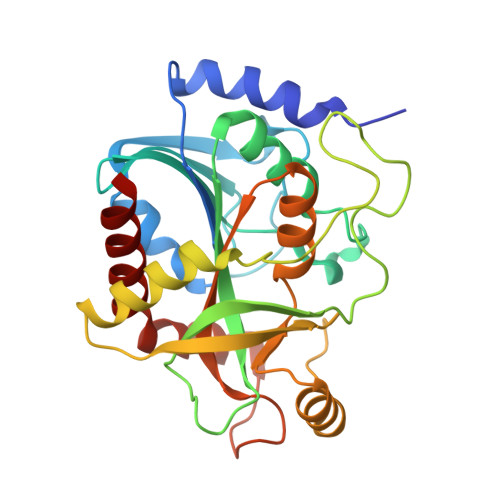Escherichia coli Purine Nucleoside Phosphorylase II, the Product of the xapA Gene
Dandanell, G., Szczepanowski, R.H., Kierdaszuk, B., Shugar, D., Bochtler, M.(2005) J Mol Biol 348: 113-125
- PubMed: 15808857
- DOI: https://doi.org/10.1016/j.jmb.2005.02.019
- Primary Citation of Related Structures:
1YQQ, 1YQU, 1YR3 - PubMed Abstract:
Purine nucleoside phosphorylases (PNPs, E. C. 2.4.2.1) use orthophosphate to cleave the N-glycosidic bond of beta-(deoxy)ribonucleosides to yield alpha-(deoxy)ribose 1-phosphate and the free purine base. Escherichia coli PNP-II, the product of the xapA gene, is similar to trimeric PNPs in sequence, but has been reported to migrate as a hexamer and to accept xanthosine with comparable efficiency to guanosine and inosine, the usual physiological substrates for trimeric PNPs. Here, we present a detailed biochemical characterization and the crystal structure of E.coli PNP-II. In three different crystal forms, PNP-II trimers dimerize, leading to a subunit arrangement that is qualitatively different from the "trimer of dimers" arrangement of conventional high molecular mass PNPs. Crystal structures are compatible with similar binding modes for guanine and xanthine, with a preference for the neutral over the monoanionic form of xanthine. A single amino acid exchange, tyrosine 191 to leucine, is sufficient to convert E.coli PNP-II into an enzyme with the specificity of conventional trimeric PNPs, but the reciprocal mutation in human PNP, valine 195 to tyrosine, does not elicit xanthosine phosphorylase activity in the human enzyme.
Organizational Affiliation:
Department of Biological Chemistry, Institute of Molecular Biology, Solvgade 83H, 1307 Copenhagen, Denmark.
















